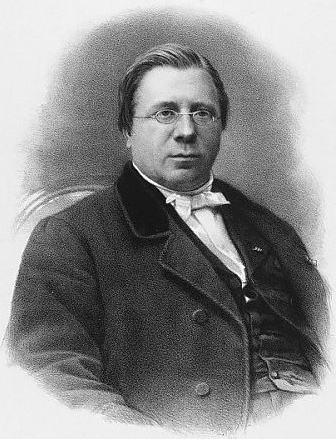<Back to Index>
- Mathematician Pierre Ossian Bonnet, 1819
- Painter Jean Étienne Liotard, 1702
- Emperor of the Roman Empire Gaius Aurelius Valerius Diocletianus Augustus, 244
PAGE SPONSOR

Pierre Ossian Bonnet (22 December 1819, Montpellier – 22 June 1892, Paris) was a French mathematician. He made some important contributions to the differential geometry of surfaces, including the Gauss - Bonnet theorem.
Pierre Bonnet attended the Collège in Montpellier. In 1838 he entered the Ecole Polytechnique in Paris. He also studied at the École Nationale des Ponts et Chaussées.
In graduating he was offered a post as an engineer. After some thought Bonnet decided on a career in teaching and research in mathematics instead. Turning down the engineering post had not been an easy decision since Bonnet was not well off financially. He had to do private tutoring so that he could afford to accept a position at the Ecole Polytechnique in 1844.
One year before this, in 1843, Bonnet had written a paper on the convergence of series with positive terms. Another paper on series in 1849 was to earn him an award from the Brussels Academy. However between these two papers on series, Bonnet had begun his work on differential geometry in 1844.
Bonnet was elected to the Academy of Sciences in 1862 to replace Biot. He defeated Bour for this position. From 1868 Bonnet assisted Chasles at the Ecole Polytechnique, and three years later he became a director of studies there. In addition to this post he also taught at the Ecole Normale Supérieure. In 1878 Bonnet succeeded Le Verrier to the chair at the Sorbonne, then in 1883 he succeeded Liouville as a member of the Bureau des Longitudes.
Bonnet did important work on differential geometry. In addition Serret, Frenet, Bertrand and Puiseux worked in France on this topic. Bonnet made major contributions introducing the notion of geodesic curvature. A formula for the line integral of the geodesic curvature along a closed curve is known as the Gauss - Bonnet theorem. Gauss published a special case.
Independently of Ferdinand Minding, Bonnet showed the invariance of the geodesic curvature under bending. Between 1844 and 1867 he published a series of papers on the differential geometry of surfaces. In 1859 he submitted an important memoir for the Grand Prize of the Paris Academy. The prize was to find all surfaces of a given linear element.